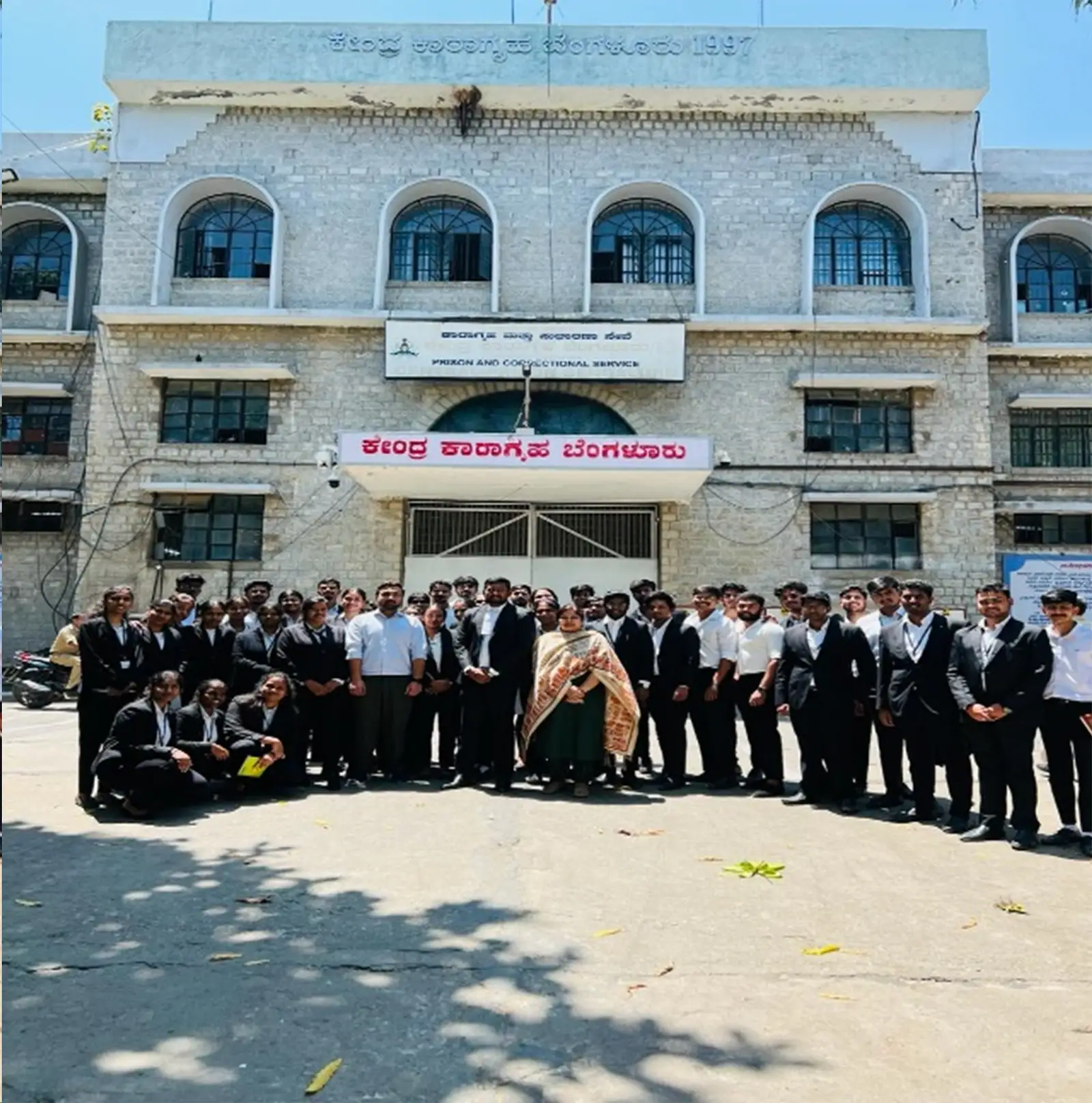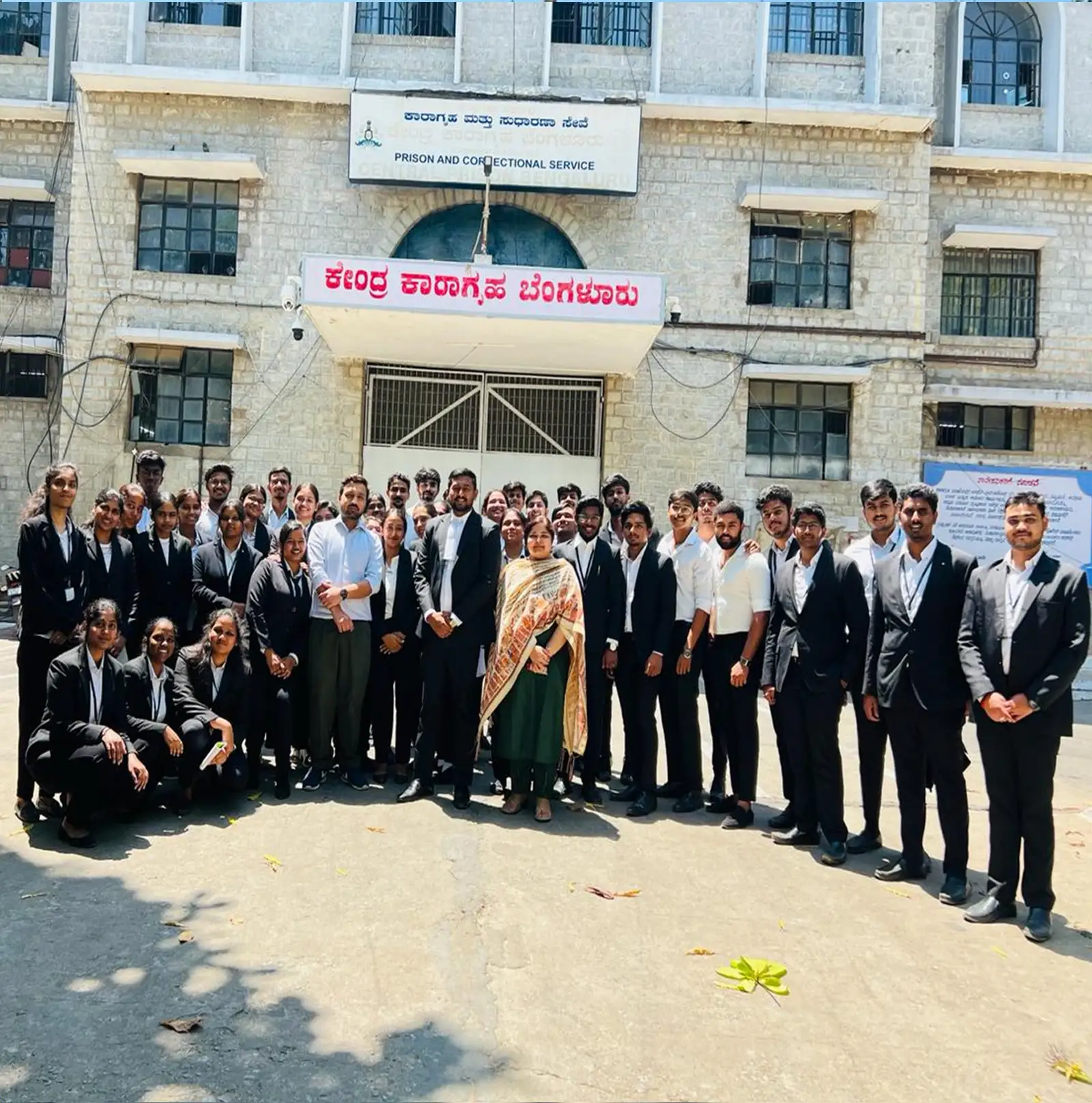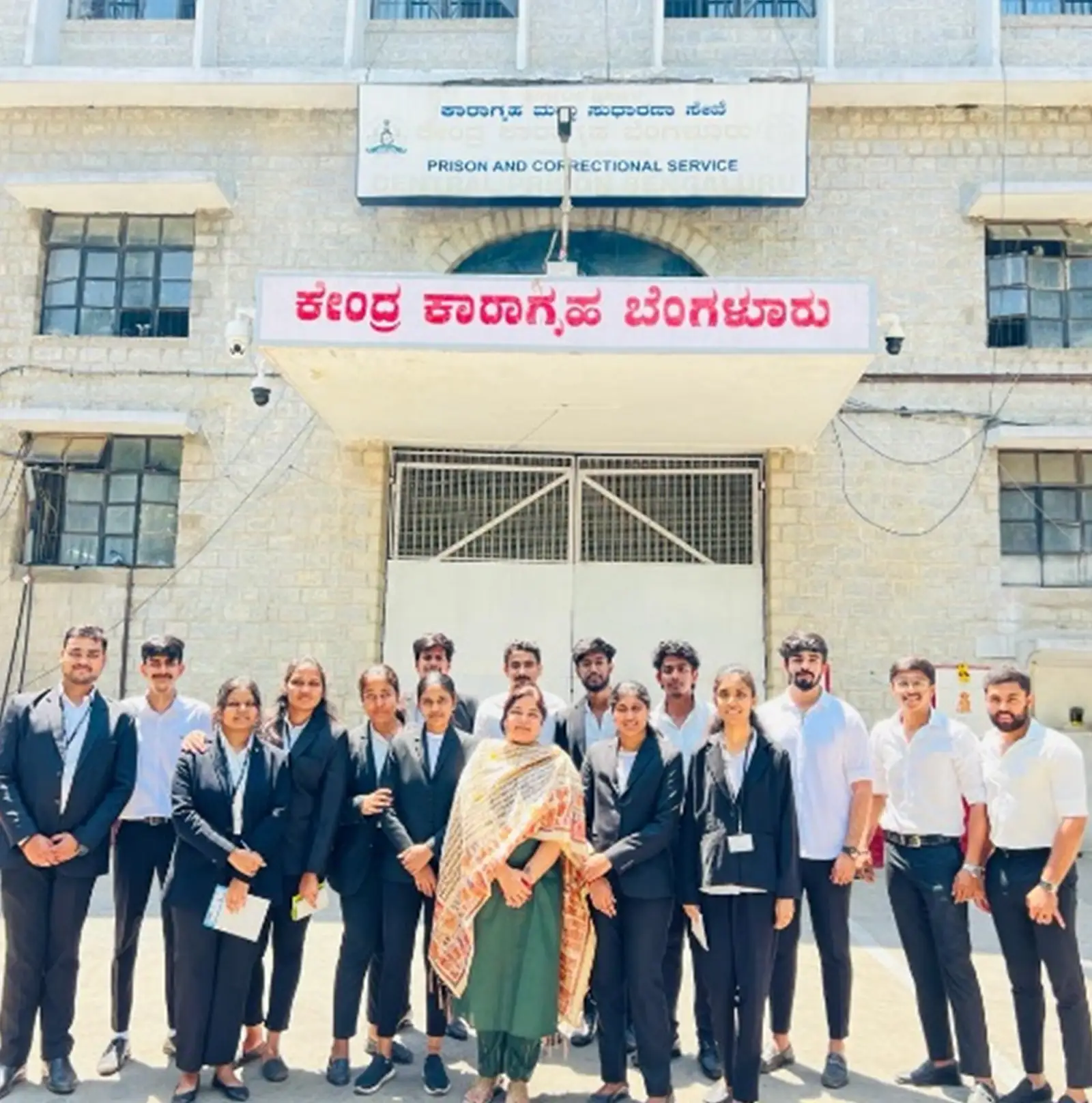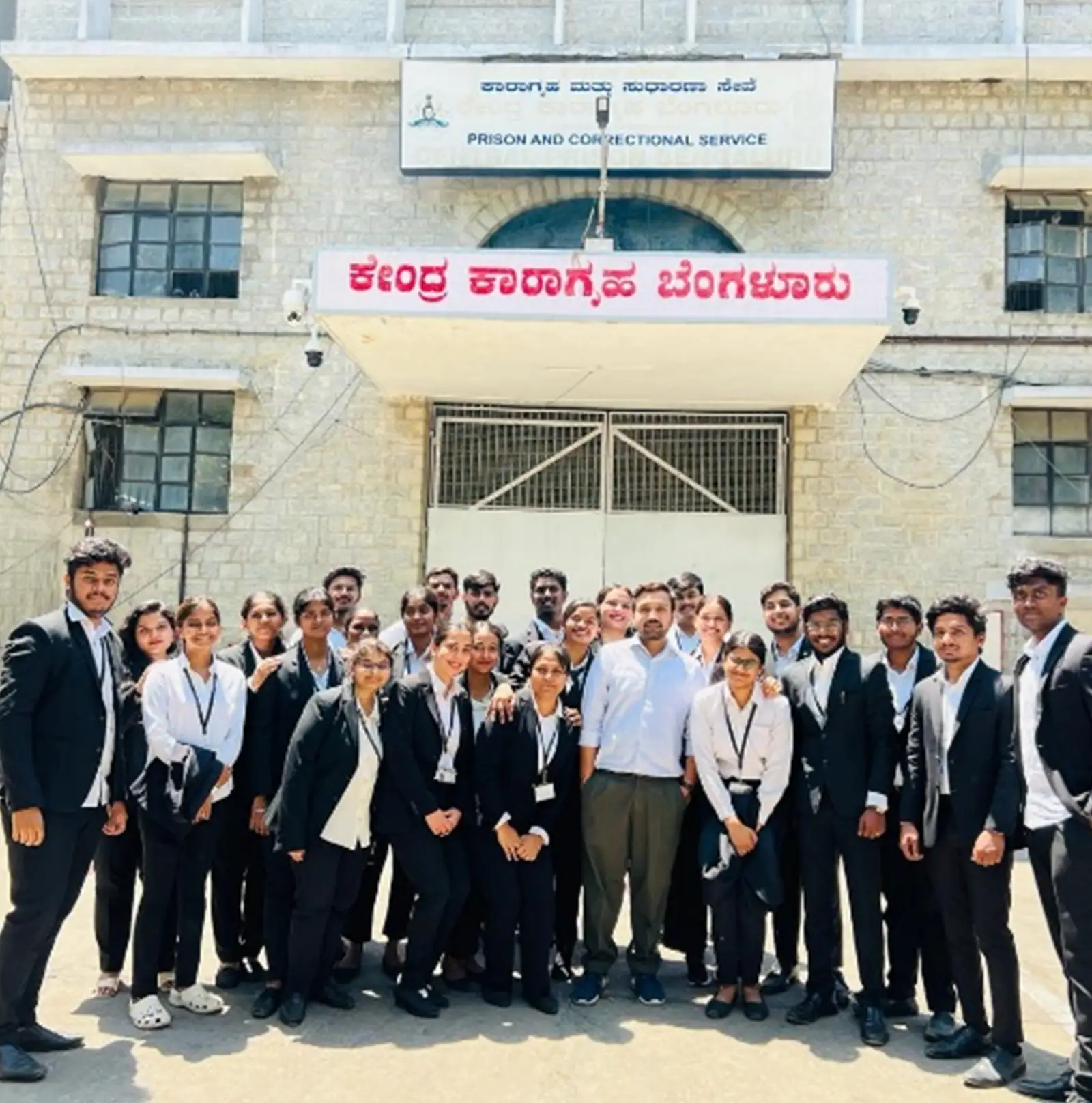Extension/ Outreach Activities [ View All ]
The educational visit to Central Prison and Correctional Services, Bengaluru
28 March, 2024The Criminal Law Honors students from 6th Semester 3rd year and 8th Semester 4th year of the Alliance School of Law, Alliance University, Bengaluru in which 21 female students and 22 male students including faculties visited the Central Prison and Correctional Service, Parappana Agrahara, Electronic City Post, Bengaluru – 560 100.




The Central Prison, Bangalore is the largest prison in the Indian state of Karnataka. Established in 1997, it became the central prison of Bangalore in 2000 when the old jail, which has since been converted to Freedom Park, was shut for renovation. The said Central Prison consisted of 300 police officers and 5135 prisoners including which females are 188, 7 children, and rest being the men prisoners. Among those prisoners 4 male prisoners were punished to death penalty. Further, there were 112 prisoners punished with rigorous imprisonment, among which 86 were male prisoners and 26 were the females. The prison also consisted of the legal services office and other administrative offices.
The two Jail authorities assisted the students in understanding the infrastructure and functioning of the prison. The students were taken to the Kitchen department of the prison which was maintained well. It was stated by the authorities that the prisoners will get egg or banana on every Tuesday and will get non-veg, either chicken or mutton on Friday. The chart indicating the food quantity which will be provided for the prisoners were mentioned. Further, in the said prison there are three categories of prisoner namely, Convicted prisoners, Under Trial prisoners and women prisoners. The Convicted prisoners are mainly kept separately from other type of prisoners. The area which the convicted prisoners are kept include 7 bairaks. This area also include bakery, where they manufacture few eatables such as biscuits, bread, bun, mixture, etc.
Further, this area also consist of printing press, where they would print all the forms required for the prison administration and would also print the books and coupons. There is a textile industry within this area. Here, the inmates would sew the mats, fabrics for uniform, etc. They also would sew the fabrics based on the orders received by the said prison from any other governmental department.
The prison also consist of carpentary and smith section where they employ the imates to undertake the activites based on the orders received or for the administartion of the prison.
The prison was also equipped with the Radio system – Community Radio in association with Mindtree Foundation led by RJ Cristopher, where it is connected to all the part of the prison. The prison also encourages the skill development of the inmates by encouraging them to get involved in certain works to exhibit their talents, such as tailoring, preparing masks, and others activities and they are also taught to enhance their skills.
Further, the prison also consisted of the under-trial prisoners and there was a separate area established opposite to the convicted prisoners area and it consisted of 9 bairaks. This area consisted of inmates who were awaiting for their trial which also included the prisoners under POCSO Act. Further, the prison consisted of three libraries which worked from 10:00 AM to 5:00 PM and had around 35,000 books which included books of all areas such as science, literature, Law, social, English, Kannada, etc. The prison also consisted of a hospital for looking into the health aspects of the prisoners and also it consisted of visitors room for the prisoners to meet their friends, relatives, etc.
The prison also consisted of a separate establishment for women prisoners along with their children which is away from the male prisons. This women prison consisted of 188 female prisoners in total, including which there are 30 female prisoners who are undergoing Rigorous imprisonment, 06 Simple imprisonment prisoners, 29 Foreign prisoners and 123 under trial prisoners.
Further, the women’s prison includes school and library, where they preach the women’s and the children about the religion, or they read books as per their interest. Further, this prison consisted of Video Conference Court, where if any court procedures are ongoing on a particular women or group of women then they can attend it through this room. The women prisoners are also allowed to enhance their skill development, where they prepare the garland and other art and craft or do tailoring.
The prison visit by the students was a profound experience that offered invaluable insights into the complex realities of incarceration. The visit highlighted the systemic challenges within the prison system such as overcrowding, limited resources, and inadequate support for rehabilitation, which was not witnessed in this prison. Therefore, in conclusion, the prison visit was a transformative learning opportunity that left a lasting impression on the students. It deepened their understanding of the complexities surrounding incarceration. The students carry forward the lessons learned from this experience, and they will continue to advocate for a more compassionate and equitable world.
